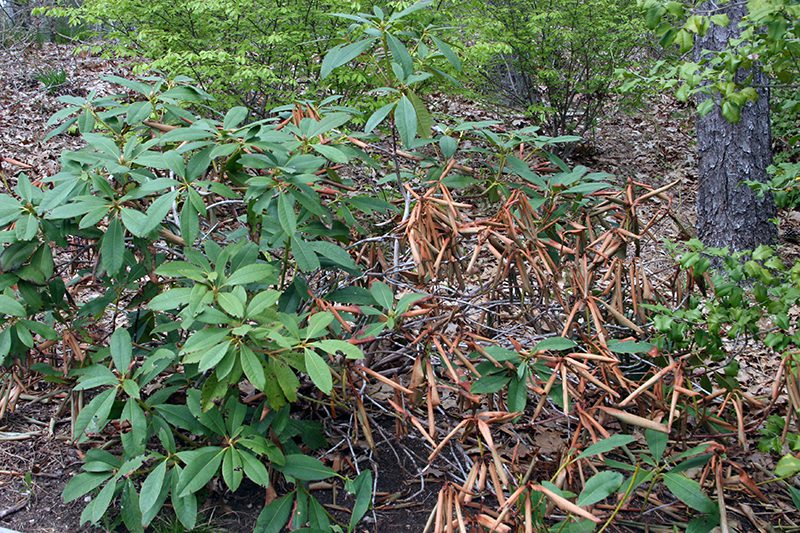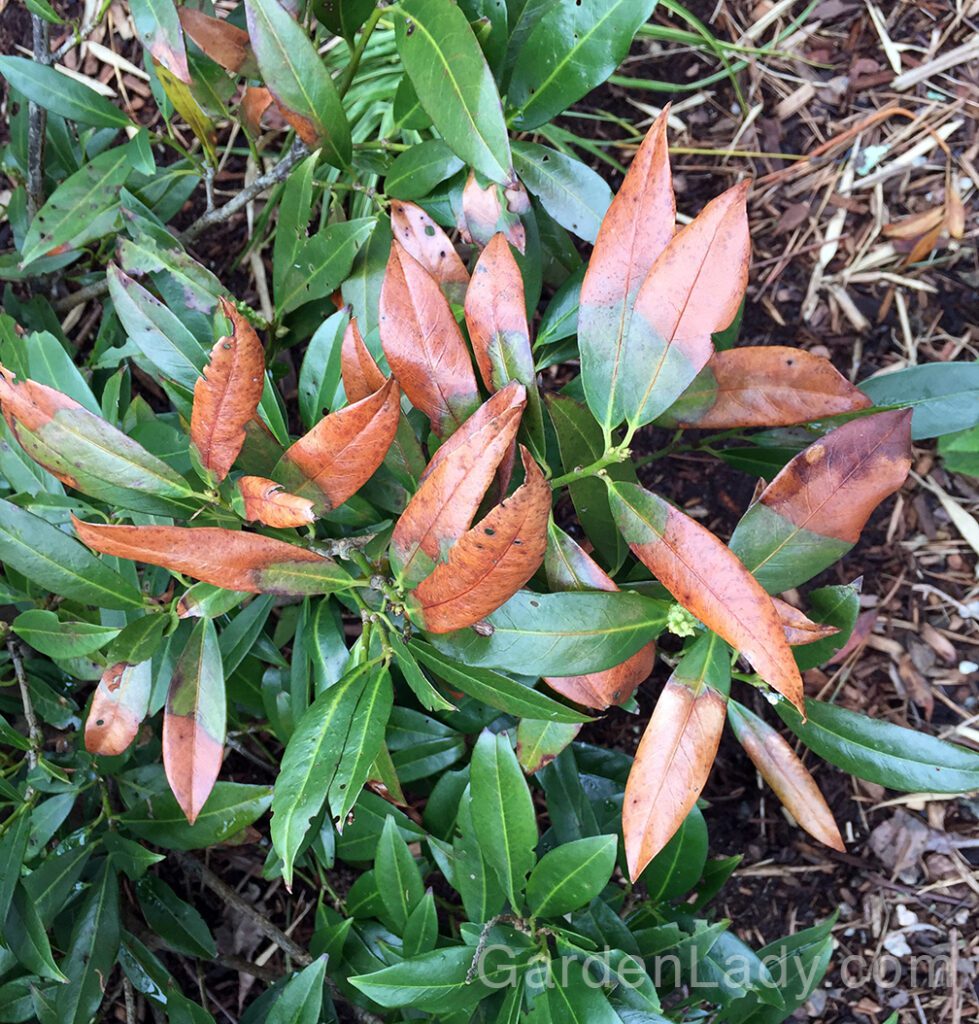Winter Damage on Evergreens
Winter Damage on Evergreens
Many of our customers are asking why their evergreens, particularly the broadleaf plants, aren’t looking very good this spring. People see dieback of stems, browned leaves and crispy buds.
This year what we see is probably caused by a combination of winter damage and the effects of drought. Last summer and fall were very dry. You might have seen your Rhododendrons with curled leaves during the summer.
This year plants show more cold damage from the low temperatures and cold winter wind. Additionally, some evergreens were sunburned by sunlight reflecting off the snow onto foliage that is normally shaded. And since most of these plants went into this hard winter with reduced root systems from the drought, damage is likely to continue appearing well into the month of May.
How can you help? 1. Apply a light application of Hollytone. 2. Spread a layer of compost or composted manure around your evergreens underneath the drip line. This can go right on top of last year’s mulch or on top of the soil before you mulch this season. 3. Be sure to water these plants regularly this year. A soaker hose wrapped under the drip-line of severely damaged plants is a good idea. If possible, lay this down before mulch is applied.
The plant will shed any severely damaged leaves. If the stems are still alive they may grow new foliage, however. Wait until June to prune so you can see if the plant will leaf out again. In mid-June, remove any dead or bare stems. Some plants may be so damaged that they’ll need to be replaced.


3 Comments
Leave a Comment
Subscribe To Our Newsletter
Sign up for our weekly email about sales and events.

I have 2 , once beautifu, hollytreein my backyard, for the last 3 years they seem to be dying. Right at the end of the Spring season a good amount of their leaves get yelow and brown falling down. The trees still keep plenty of dull green leaves. I could tell that there’s some diasese hurting the Hollitrees. Is there any treatment I can try to bring those trees back to shine again?
Warmly,
Maria
I have 2 , once beautifu, hollytree in my backyard, for the last 3 years they seem to be dying. Right at the end of the Spring season a good amount of their leaves get yelow and brown falling down. The trees still keep plenty of dull green leaves. I could tell that there’s some diasese hurting the Hollytrees. Is there any treatment I can try to bring those trees back to shine again?
Warmly,
Maria
Maria,
The process of shedding older leaves in the spring is just what our native hollies do naturally. They are dumping the old foliage in favor of the new growth, and this happens every May. It doesn’t mean that anything is wrong and this isn’t a disease. The native hollies (Ilex opaca) do this much more than other varieties such as the blue hollies (Ilex meserveae) so you don’t see some types doing the same thing. To keep your native holly a deeper green, apply Hollytone on the ground under the dripline (outside edge of tree up to the trunk) and an inch or two of compost or composted manure. You could apply manure one year and an inch or two of bark mulch the next if you’d like. It’s not too late to put those amendments down this year but you might want to do it before July.